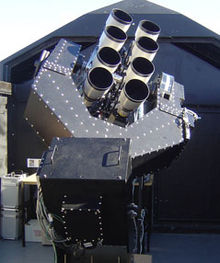Extrasolar planet will most probably fall into its star
Thursday, August 27, 2009
Astronomers have discovered an extrasolar planet that may eventually collide into its sun. The planet, called WASP-18b, orbits its star in under one day, and is 10 times larger than Jupiter. Its star is 1,000 light years from Earth. The discovery was made by British astronomers. The planet's name is derived from the group that discovered it, WASP (Wide Angle Search for Planets).

Image: David Anderson.
The planet is approximately one billion years old. Tidal interactions between the planet and its star are pulling them together, and it will likely crash into its star in under one million years. The planet is relatively much closer to its star than Earth is to the Sun. Earth is a distance of 93 million miles from the sun, whereas WASP-18b is only 1.4 million miles from its star.
| The problem with this planet is that it's very massive and very close to its star. | ||
—Professor Andrew Collier Cameron | ||
Professor Andrew Collier Cameron of St. Andrew's University commented on the inherent problems with the planet: "The problem with this planet is that it's very massive and very close to its star. It should be creating tidal bulging that makes it spiral into its star."
Coel Hellier of Keele University led a group of researchers that discovered the planet. Their study of WASP-18b was published in the August 27 issue of the journal Nature. Scientists had a 1 in 2,000 chance of discovering the planet. There are 300 planets which are known to orbit stars other than the Sun.
Sources
- Cynthia Graber. "New Exoplanet Shouldn't Exist" — Scientific American, August 27, 2009
- Steve Connor. "Planet found that defies the laws of physics" — The Independent, August 27, 2009


